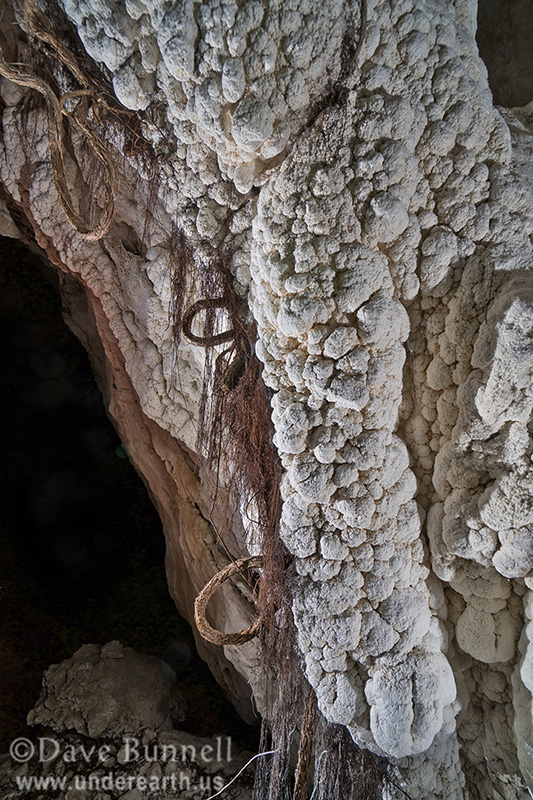
Moonmilk is a white deposit formed of aggregates of very fine crystals of varying composition. It is gooey and pasty when wet, with a texture like cream cheese. It is crumbly and powdery when dry. Usually moonmilk is made of carbonate materials (e.g., calcite, hydromagnesite, gypsum...).
Moonmilk is a very common cave deposit that probably precipitates from dripwater entering the cave, but forming very fine crytals rather than the larger ones typical of calcite deposits like flowstone. As can be seen in the photo below, moonmilk may take on shapes somewhat like those of flowstone. Micro-organisms such as bacteria, algae, and fungus have been found in moonmilk and may play a role in its formation, though not all moonmilk deposits contain such organisms. It is also often associated with roots, which may help carry organics such as these into the cave. |
![]()

![]()
| Back to: | |
 |
Created: December, 1998 Updated December, 2020 |